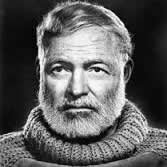(RBTH) One of the hottest periods of the Cold War ended in January 1958, with the signing of the Lacy-Zarubin Agreement, also known as the “Agreement Between the Soviet Union and the United States of America on Exchanges in Science, Technology, Education, Culture, and Other Spheres.”
Soon after, young pianist Van Cliburn won the International Tchaikovsky Competition in Moscow, while Igor Moiseyev’s folk dance ensemble and the Bolshoi Ballet made a big impression during American tours. Later, in 1973, American and Soviet scientists were able for the first time to conduct research projects in other countries with the support of the Fulbright program.
With the onset of perestroika and the reform years at the end of the 1980s and beginning of the 1990s, ordinary Russians and Americans started to actively visit one another’s’ countries, and foreign exchange programs opened up for Russian and American students.
During that period, the U.S. government and American philanthropists invested heavily in building the infrastructure for these exchange programs – to a much greater extent than the Russians did, since Russia was suffering through a serious economic crisis at the time. […]
See the full article © Russia Beyond the Headlines (RBTH)
This comment is available in Russian at RBC Daily










